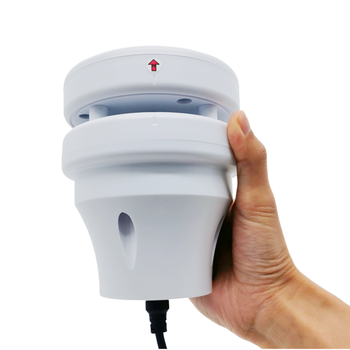Wind turbines are a key component in the world’s transition to net zero. Here we look at the sensor technology that ensures its safe and efficient operation.
Wind turbines have a life expectancy of 25 years, and sensors play a key role in ensuring that the turbines achieve their life expectancy. By measuring wind speed, vibration, temperature and more, these tiny devices ensure wind turbines operate safely and efficiently.
Wind turbines also need to be economically viable. Otherwise, their use will be considered less practical than the use of other forms of clean energy or even fossil fuel energy. Sensors can provide performance data that wind farm operators can use to achieve peak power production.
The most basic sensor technology for wind turbines detects wind, vibration, displacement, temperature and physical stress. The following sensors help establish baseline conditions and detect when conditions deviate significantly from baseline.
The ability to determine wind speed and direction is critical to assessing the performance of wind farms and individual turbines. Service life, reliability, functionality and durability are the main criteria when evaluating various wind sensors.
Most modern wind sensors are mechanical or ultrasonic. Mechanical anemometers use a rotating cup and vane to determine speed and direction. Ultrasonic sensors send ultrasonic pulses from one side of the sensor unit to a receiver on the other side. Wind speed and direction are determined by measuring the received signal.
Many operators prefer ultrasonic wind sensors because they do not require recalibration. This allows them to be placed in places where maintenance is difficult.
Detecting vibrations and any movement is critical to monitoring the integrity and performance of wind turbines. Accelerometers are commonly used to monitor vibrations within bearings and rotating components. LiDAR sensors are often used to monitor tower vibrations and track any movement over time.
In some environments, the copper components used to transmit turbine power can generate large amounts of heat, causing dangerous burns. Temperature sensors can monitor conductive components that are prone to overheating and prevent damage through automatic or manual troubleshooting measures.
Wind turbines are designed, manufactured and lubricated to prevent friction. One of the most important areas to prevent friction is around the drive shaft, which is achieved primarily by maintaining a critical distance between the shaft and its associated bearings.
Eddy current sensors are often used to monitor “bearing clearance”. If the clearance decreases, lubrication will decrease, which can lead to reduced efficiency and damage to the turbine. Eddy current sensors determine the distance between an object and a reference point. They are able to withstand fluids, pressure and temperature, making them ideal for monitoring bearing clearances in harsh environments.
Data collection and analysis are critical for day-to-day operations and long-term planning. Connecting sensors to a modern cloud infrastructure provides access to wind farm data and high-level control. Modern analytics can combine recent operational data with historical data to provide valuable insights and generate automated performance alerts.
Recent innovations in sensor technology promise to improve efficiency, reduce costs and improve sustainability. These advances relate to artificial intelligence, process automation, digital twins and intelligent monitoring.
Like many other processes, artificial intelligence has greatly accelerated the processing of sensor data to provide more information, improve efficiency and reduce costs. The nature of AI means that it will provide more information over time. Process automation uses sensor data, automated processing, and programmable logic controllers to automatically adjust pitch, power output, and more. Many startups are adding cloud computing to automate these processes to make the technology easier to use. New trends in wind turbine sensor data extend beyond process-related issues. Data collected from wind turbines is now being used to create digital twins of turbines and other wind farm components. Digital twins can be used to create simulations and assist in the decision-making process. This technology is invaluable in wind farm planning, turbine design, forensics, sustainability and more. This is especially valuable for researchers, manufacturers and service technicians.
Post time: Mar-26-2024


